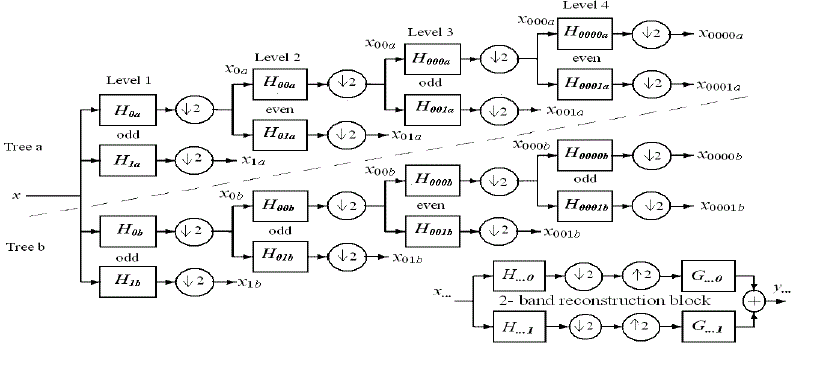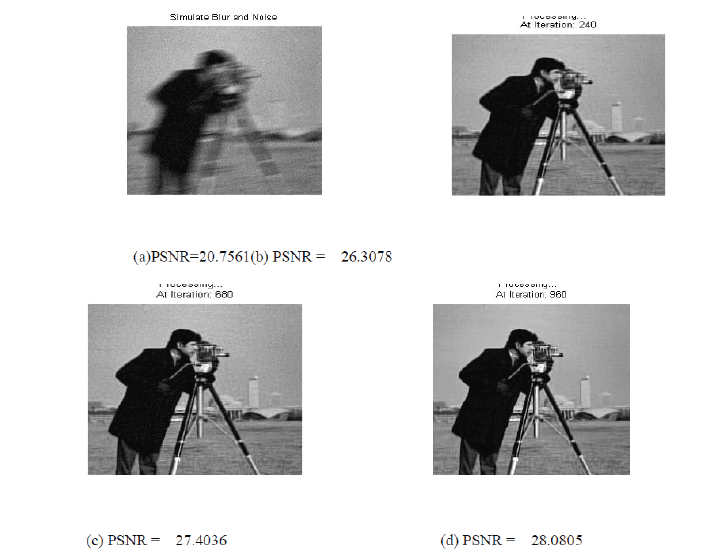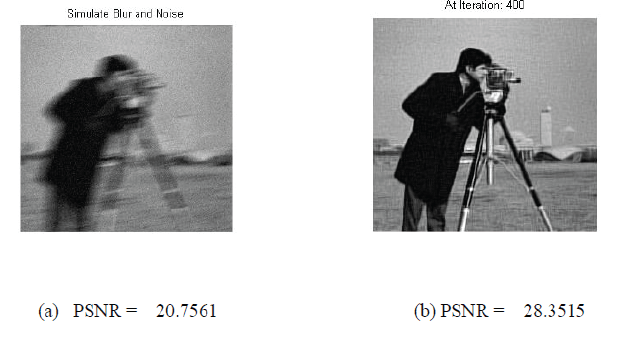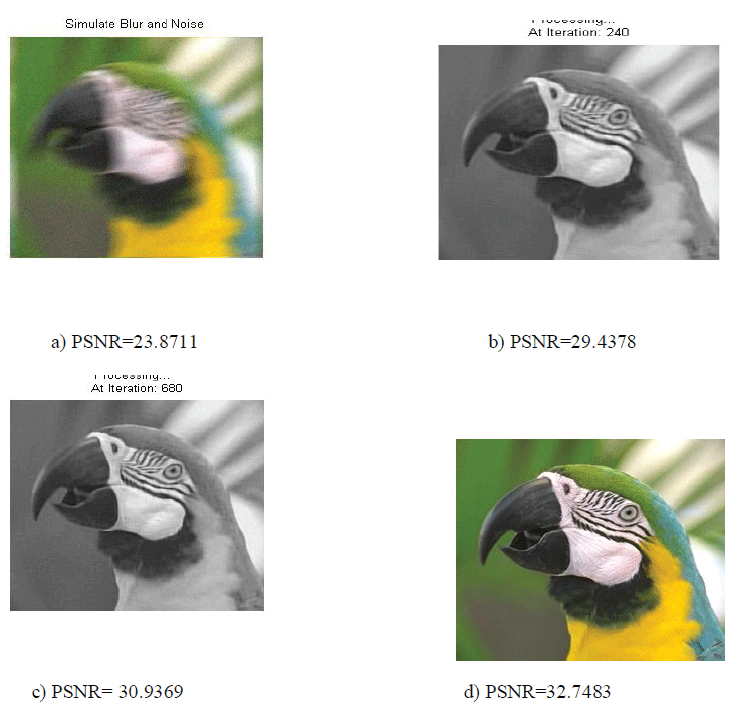Keywords
|
| Active Power Filter(APF), Current-detection algorithm, harmonic compensation, reactive power compensation, time domain. |
INTRODUCTION
|
| Image denoising is a technique which removes out noise which is added in the original image. Noise reduction is an important part of image processing systems. An image is always affected by noise. Image quality may get disturbed while capturing, processing and storing the image. Noise is nothing but the real world signals and which are not part of the original signal. In images, noise suppression is a particularly delicate task. In this task, noise reduction and the preservation of actual image features are the main focusing parts. The wavelet transform provides a multiresolution [1] representation using a set of analyzing functions that are dilations and translations of a few functions (wavelets). A denoising method is used to improve the quality of image corrupted by a lot of noise due to the undesired conditions for image acquisition. The image quality is measured by the peak signal-to-noise ratio (PSNR) or signal-to noise ratio (SNR). Traditionally, this is achieved by linear processing such as Wiener filtering [3]. Recently introduced Dual-Tree Complex wavelet transforms and Multilevel Dual-Tree Complex DWT can give best results in image denoising applications. |
RELATED WORK
|
| The transform is an function of change image one forum into forum .it classified many types the one transform is wavelet transform main function of wavelet transform is real and imaginary values into orthonormal series in this transform used for specific applications. Compare to slant and haar transform the both algorithms are used for image denoising depend upon applications function of slant transform One shape image into another shape image using transformation the image horizontal or vertical shapesusing mathematical representation. The wavelet transform is computed separately for different segments of the time-domain signal at different frequencies. Multi-resolution analysis: analyzes the signal at different frequencies giving different resolutions [2]. Multi-resolution analysis is designed to give good time resolution and poor frequency resolution at high frequencies and good frequency resolution and poor time resolution at low frequencies. Good for signal having high frequency components for short durations and low frequency components for long duration, e.g. Images and video frames This is a newly introduced technique of DWT. Orthogonal wavelet decompositions, based on separable, multirate filtering systems have been widely used in image and signal processing, largely for data compression. Kingsbury introduced a very elegant computational structure, the Dual-Tree complex wavelet transform which displays near-shift invariant properties. Other constructions can be found such as in .Kingsbury pointed out the problems of Mallat-type algorithms. These algorithms have the lack of shift invariance. |
DUAL TREE COMPLEX WAVELET TRANSFORM (DTCWT)
|
| In this system complex value extended to discrete forum .our work with complex wavelets for motion estimation [5] showed that complex wavelets could provide approximate shift invariance. Unfortunately we were unable to obtain PR and good frequency characteristics using short support complex FIR filters in a single tree (e.g., Fig.2). However, we observed that we can also achieve approximate shift invariance with a real DWT, by doubling the sampling rate at each level of the tree. For this to work, the samples must be evenly spaced. One way to double all the sampling rates in a conventional wavelet tree, such as tree a Fig.3, is to eliminate the down-sampling by 2 after the level 1 filters. For linear phase filters, this requires odd-length filters in one tree and even-length filters in the other. Greater symmetry between the two trees occurs if each tree uses odd and even filters alternately from level to level, but this is not essential. Note the vertical alignment of these bases at each scale, such that the tree b scaling functions interpolate midway between those of tree a, while the tree b wavelets are aligned with those of tree a, but with a quadrature phase shift in the underlying oscillation .To invert the DT CWT, each tree in Fig.2 is inverted separately using orthogonal filters G..., designed for perfect reconstruction with the corresponding analysis filters H... in the 2-band reconstruction block, shown lower right. Finally the two tree outputs are averaged in order to obtain an approximately shift invariant system. |
| This system is a wavelet frame with redundancy two; and if the filters are designed such that the analysis and reconstruction filters have very similar frequency responses (i.e., are almost orthogonal), then it is an almost tight frame, which means that energy is approximately preserved when signals are transformed into the DT CWT domain[3]. The basic functions were obtained by injecting unit pulses separately into the inverse DT CWT at each scale in turn. The real and imaginary parts were obtained by injecting the unit pulses into trees a andb in turn. |
DTCWT WITH ORTHOGONAL SHIFT PROPERTY
|
| In order to examine the shift invariant properties of the dual tree in either the odd/even or Q-shift forms, consider what happens when we choose to retain the coefficients of just one type (wavelet or scaling function) from just one level of the dual tree. For example, we might choose to retain only the level-3 wavelet coefficients x001aand x001b, and set all others to zero. If the signal y, reconstructed from just these coefficients [4], is free of aliasing then we define the transform to be shift invariant at that level. This is because absence of aliasing implies that a given sub band is a linear time-invariant (LTI) system and therefore is fully characterized by a single impulse response and a corresponding ztransfer function. In this context we define a sub band as comprising all coefficients from both trees at a given level and of a given type (either wavelet or scaling function)[9]. Figure.3 shows the simplified analysis and reconstruction parts of the dual tree when coefficients of just one type and level are retained. All down-sampling and up-sampling operations are moved to the outputs of the analysis filter banks and the inputs of the reconstruction filter banks, respectively, and the cascaded filter transfer functions are combined. |
SIMULATION RESULT OF DUAL TREE COMPLEX WAVELET TRANSFORM
|
| The main process of wavelet transform is real and imaginary value into orthonormal series .orthonormal means continuous and discrete forum the dual tree complex wavelet transform define as dual real trees combined to perform functionThe experimental results of dual tree complex wavelet transform aregiventhe mathematical representation based simulation results are shown in forum of mat lab representation.The input image signal to noise ratio level is 20.7561 at the next stage of iteration 240 fig (b) Signal to noise ratio level is 26.3078.at the level of iteration 680 signal to noise ratio level is 27.4036 next level of iterations final stage of iteration 960 signal to noise ratio level is 28.0805 simulation results of DTCWT compare to existing algorithm its shown an better results and originality of the image can be improved. |
SIMULATION RESULT OF DTCWT WITH OSP
|
| The simulation results of dual tree complex wavelet transform with orthogonal shift propoerties is given .in this algorithm based on wavelet transform in this techniques used to denoise an images compare to wavelet trransform and dual tree complex wavelet transform in this algorithm is a best one for image denoising. |
| The comparison table based on proposed algorithms dual tree complex wavelet transform and dual tree complex wavelet transform and orthogonal shift properties .compared to in this algorithms best one is dual tree complex wavelet transform with orthogonal shift properties. |
DTCWT& DTCWT WITH OSP USING RGB IMAGES
|
| In This dual tree complex wavelet transform is applicable for rgb images denoising process we experimentally shown in gray level images and rgb images mostly rgb images are corrupted by noise during image transmission and acquisition it is efficient method for recover an images in this algorithm used to recover an all type of images and also shown an better experimental results. |
| The comparison table based on proposed algorithms dual tree complex wavelet transform and dual tree complex wavelet transform and orthogonal shift properties using rgb images. |
| The technique is faster and gives better results. Some aspects that were analyzed in this paper may be useful for other denoising schemes. The shift invariance of the dual-tree complex wavelet transform has been presented. The DTCWT is shown to possess good shift invariance properties, given suitably designed biorthogonal or orthogonal wavelet filters. These properties extend to multiple dimensions. By using this technique, the noise is getting reduced and also we can get the originality of the image and also improved signal to noise ratio. |
Tables at a glance
|
 |
 |
| Table 1 |
Table 2 |
|
Figures at a glance
|
 |
 |
 |
| Figure 1 |
Figure 2 |
Figure 3 |
 |
 |
 |
| Figure 4 |
Figure 5 |
Figure 6 |
|
References
|
- Massimo Fierro, Ho-Gun Ha, and Yeong-Ho Ha, Senior Member, IEEE Noise Reduction Based on Partial-Reference, Dual-Tree ComplexWavelet Transform Shrinkage IEEE transactions on image processing, vol. 22, no. 5, may 2013
- Mr.D.Suresh,.Mr.P.Suseendhar Impulse Noise Reduction In Images Using Dual Tree Complex Wavelet Transforminternational Journal ofEmerging Trends And Research (IJETR) Volume 1, Issue 1,Nov. 2013
- Mr. R. K. Sarawale1, Dr. Mrs. S.R. Chougule1 Image Denoising using Dual-Tree Complex DWT and Double-Density Dual-Tree ComplexDWT International Journal of Advanced Research in Computer Engineering & Technology (IJARCET) Volume 2, Issue 6, June 2013
- Mr.D.Suresh,.Mr.P.SuseendharNoval method for image denoising using wavelet transform and dual tree complex wavelet transforminternational journal of graphics and image processing(IJGIP) volume 3,issue 4,Nov 2013
- Mhih-Yuan Lien, Chien-Chuan Huang, Pei-Yin Chen, Member, IEEE, and Yi-Fan Lin An Efficient Denoising Architecture for Removal ofImpulse Noise in Images IEEE transactions on computers, vol. 62, no. 4, April 2013.
- Kunal Narayan Chaudhury, Student Member, IEEE, and Michael Unser, Fellow, IEEE On the Shiftability of Dual-Tree Complex WaveletTransforms IEEE transactions on signal processing, vol. 58, no. 1, January 2010.
- Shan Lal, Mahesh Chandra, Gopal Krishna Upadhyay, Deep Gupta, âÃâ¬Ãâ¢Removal of Additive Gaussian Noise by Complex Double Density DualTree Discrete Wavelet Transform” MIT International Journal of Electronics and Communication Engineering, Vol. 1, No. 1, pp. 8-16 Jan 2011.
- N. G. Kingsbury, The dual-tree complex wavelet transform: a new technique for shift invariance and directional filters, Proceedings of the IEEE Digital Signal Processing Workshop, 1998.
- Mikael Carlavan and Laure Blanc-Féraud “Sparse Poisson Noisy Image Deblurring”, IEEE Transactions on Image Processing, vol. 21, no. 4,pp1057-7149. , April 2012
- Devanand Bhonsle and SandeepaDewangan Comparative Study of dual-tree complex wavelet transform and double density complex wavelettransform for Image Denoising Using Wavelet-DomainâÃâ¬Ãâ International Journal of Scientific and Research Publications, vol. 2, Issue 7, pp. 1-5, July 2012.
|